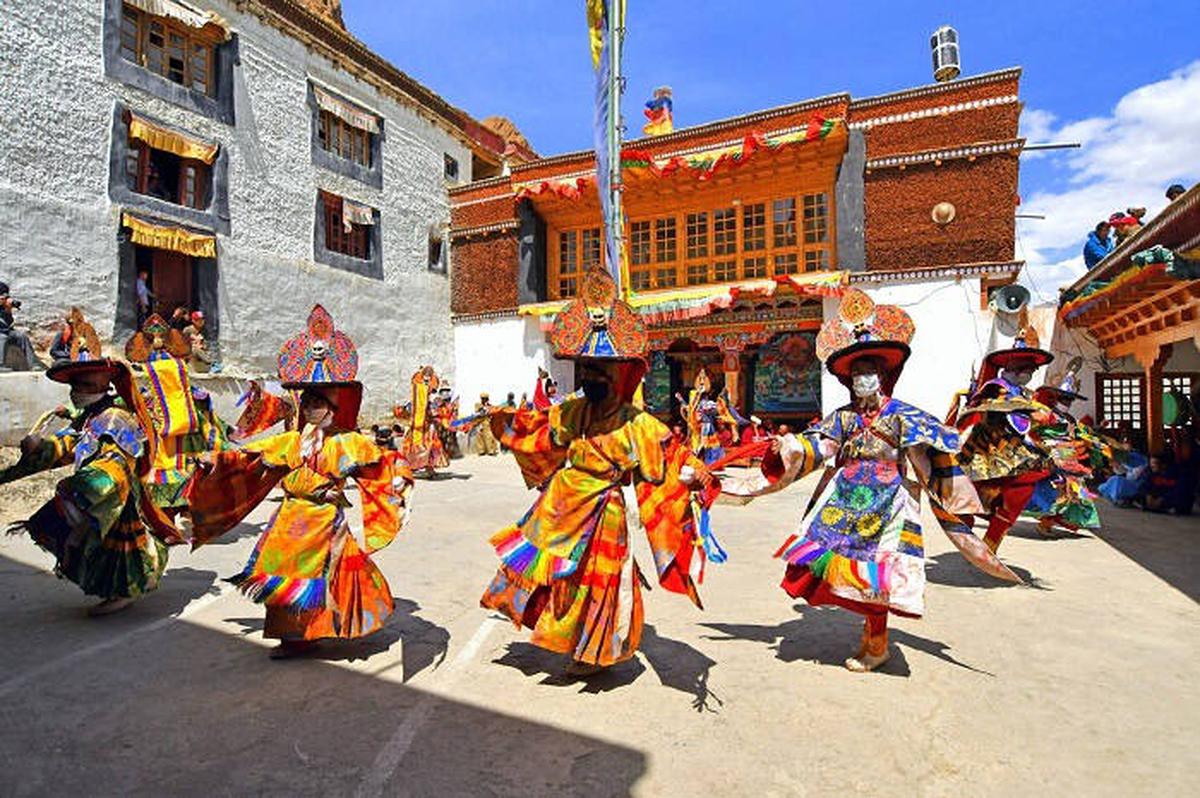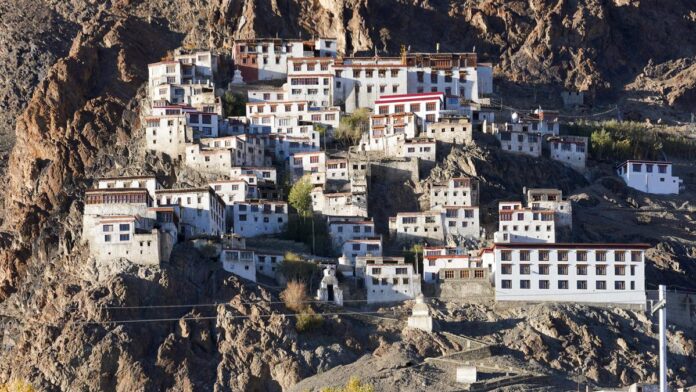
Karsha Monastery
| Photo Credit: Special Arrangement
At Ladakh’s Karsha Monastery, nestled in the Zanskar valley known for the famous Chadar trek, some 230 kilometres from Kargil, Buddhist monks are busy preparing for the annual monastic festival — Karsha Gustor.
They are assembling their vibrant, silk attire and grand, emotive masks to be donned during theCham dance performance — the key highlight of the two-day celebrations beginning on July 15. In Tibetan, ‘Gu’ means nine and ‘stor’ means the religious structure through which obstacles are driven away, explains Lama Phuntsok Wangpo, secretary of the monastery.
Buddhist monks in their traditional attire and masks
| Photo Credit:
Special Arrangement
On an average, more than 2,000 people attend the festival every year and last year it witnessed a footfall of nearly 2,500 people, says the lama. Until 1988, the festival was held in the 11th month of the lunar calendar, which is in January, the coldest month in the valley, he remembers. “With no means of transport at the time, people would come on foot, covering many kilometres through the thick blanket of snow, to attend the festival,” says the lama. He then recalls the change that was introduced to ease the cumbersome journey in 1989. “The date of the festival was changedr to the fifth month, which is July.”
The festival is a form of annual prayers for happiness and peace. “The main attraction of the festival is the two-to-three-hour-long mask dance (or Cham dance) by the monks of the monastery. The masks embody the wrathful deities and protectors of Buddhism. It is believed these deities drive out evil forces, fear and terror from the heart and mind,” he says.

Buddhist monks performing Cham dance
| Photo Credit:
Special Arrangement
The origin of theCham dance during monastic festivals is not clearly known through historic or religious books, but it does share its roots with Tantric mystic arts, he adds. “It is said to have originated in the Tibetan Himalayan range and the date and year are a treasured secret. According to legend, the Cham dance tradition was started by Guru Padmasambhava in the late 8th Century. It is also believed that the king of Tibet, Trisong Detsen, called Guru Padmasambhava to get rid of evil spirits from the place where today we can see the Samye monastery,” he says. The same ritual over time became the elaborate Cham dance, a practice specific to the sect of Mahayana Buddhism. And now, it is an integral part of Buddhism and festivals of Ladakh.
Buddhist monks performing Cham dance
| Photo Credit:
Special Arrangement
While elaborating on the narrative of the mask dances, he adds, they depict the tales of destruction of the evil spirits by the deities. “Before the performance, gods and deities of Buddhism are evoked. The tradition fits the monastic life as the dance is not focussed on movements but on rituals of meditation, hand gestures, chants and invocation of the deities. Dressed in extravagant headgear and masks, the monks take up the roles of deities and demons and put up a mock battle with good prevailing over evil,” he says.
Buddhist monks at the Karsha Monastery
| Photo Credit:
Special Arrangement
The masks, says the lama, are made with wood and cloth and date back to 1959 when they were brought from Tibet. “The attire too is made from silk and mostly brought from Tibet before in 1959. Nowadays the attire is made in Arunachal Pradesh, Sikkim, Dharamsala in Himachal Pradesh and also in Ladakh,” he says.
Entry to the festival is free.
A sneak peak into the country’s biggest events and festivals before they happen. So, you want to travel more? Watch this space.
#Monks #masks #mountains #Karsha #Gustor
